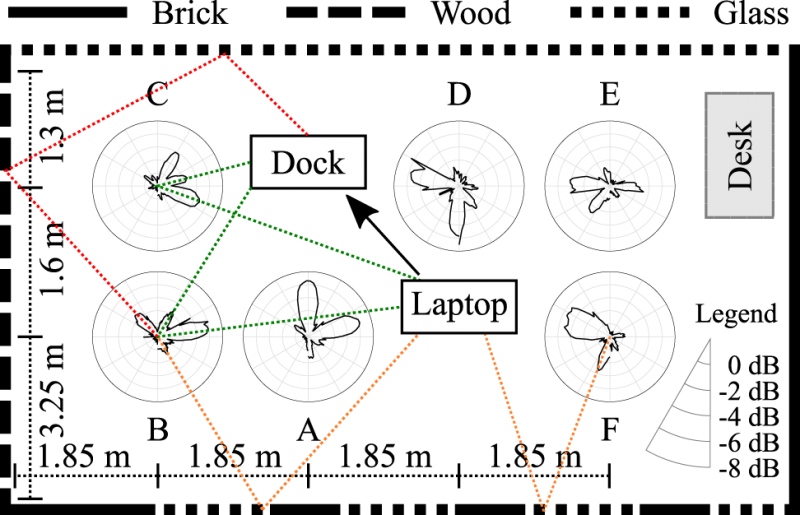Lower operating costs, enhanced performance, flexibility, resilience and interoperability in 5G networks are all available to mobile operators following the recent completion of a major research project. The 4-year TIGRE5-CM project, coordinated by IMDEA Networks Institute in Madrid, delivers an architecture designed for future mobile networks, based on the SDN (Software Defined Networking) paradigm. TIGRE5-CM simplifies deployment, configuration and management in both the access and core networks, integrating cutting-edge technologies
Joerg Widmer, Research Director at IMDEA Networks and coordinator of TIGRE5, explains how the advantages offered by the system will directly benefit end-users. “TIGRE5 has the potential to greatly improve the quality of the end-user experience. The main focus of the project has been in making easier the deployment, configuration and management of the network. This allows, for example, new services to be rapidly rolled-out on the market while exposing an efficient and reliable network to the end users. One of the areas where we’ve made significant progress in TIGRE5 is in the efficiency and accuracy of position estimation in localization systems. Consequently, TIGRE5 systems would work very well in applications and services in environments where indoor localization is an essential component such as in transportation hubs, like airports and railway stations”.

According to Widmer, the project has succeeded for three main reasons. The first has been tight cooperation between the project partners - the Wireless Networking Group at IMDEA Networks Institute and research groups at Universidad Carlos III de Madrid and Universidad de Alcalá - and the project’s synergy with other ongoing research. Second, has been prototyping to demonstrate the real benefits of the proposed solutions. Third, he believes that researchers’ minds were focused on asking the right research questions and conducting rigorous experiment design by the ambitious vision established at the outset. The results of this research have been published in leading scientific journals and conferences.
Prototyping threw up some of the project’s biggest challenges, says Widmer. “Prototyping really tested our team as much as the technology. We needed endless patience, persistence and sheer hard work but ultimately we successfully developed and tested the correct operation of the platforms such as the location systems testbeds, openVLC, an FPGA-based prototype of a D2Dcompliant cellular network and openLEON”.
IMDEA Networks’ researchers made pioneering contributions in the fields of mm-wave, visible light communications (VLC) and device-to-device communications. Widmer explains, “These technologies represent alternative solutions in the face of sharply increasing traffic demands that now challenge legacy solutions at sub-6GHz bands. We have also been able to pioneer techniques to measure and predict the future demands of mobile network traffic with the objective of optimizing network resource utilization”.
Work on the scientific research topics addressed by TIGRE5-CM will now continue with the TAPIRCM project which aims to design Artificial Intelligence/Machine learning-based 5G network architectural solutions.

Illustration 1. Analysis of the impact of reflections patterns in a realistic mm-wave wireless setting (conference room). The dotted lines show examples of Line of Sight paths as well as first and second order reflections. The results of TIGRE5-CM highlight that these second order reflections can still be strong, hence MAC layer designs should take advantage from those to improve system performance.
Illustration 2. Data transmission over a mm-wave channel exclusively via a reflected path. Please note that the angular energy profile does not include any lobe on the Line of Sight path
Additional Resources:
 Project website: http://www.tigre5-cm.es/
Project website: http://www.tigre5-cm.es/
Research projects at IMDEA Networks: TIGRE5-CM
WNG-IMDEA Networks Group: http://wireless.networks.imdea.org
Bibliographical References:
Claudio Fiandrino, Hany Assasa, Paolo Casari, Joerg Widmer (January 2019)
Scaling Millimeter-Wave Networks to Dense Deployments and Dynamic Environments (Accepted for publication) [PDF ]
Proceedings of the IEEE. IEEE. ISSN 0018-9219.
Guillermo Bielsa, Adrian Loch, Irene Tejado, Thomas Nitsche, Joerg Widmer (October 2018)
60 GHz Networking: Mobility, Beamforming, and Frame Level Operation From Theory to Practice
(Accepted for publication) [PDF ]
IEEE Transactions on Mobile Computing. IEEE Communications Society. ISSN 1536-1233.

